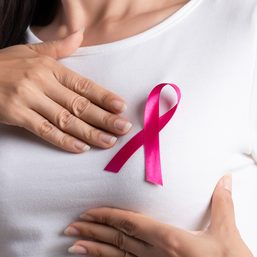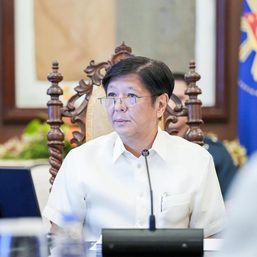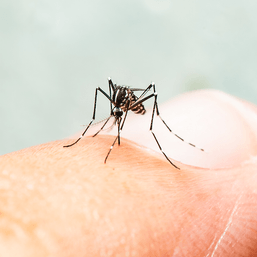SUMMARY
This is AI generated summarization, which may have errors. For context, always refer to the full article.

CAGAYAN DE ORO, Philippines – In remote villages of Cagayan de Oro, the reliance of indigenous people on traditional healing practices, despite showing signs of serious illnesses like breast cancer, is causing alarm.
Experts stress the significant health risks this choice poses, especially in a country with high breast cancer mortality rates.
Folk medicine is typically based on the cultural beliefs and experiences of a specific group of people and may not always be supported by modern scientific evidence.

Higaonon elder Bae Kalalagan, for instance, is among the 12,000 Higaonons in the city who cling to their traditional healing practices, despite modern healthcare options provided by the local and national government agencies.
When friends or relatives come to Bae Kalalagan seeking advice for their ailments, she tells them to look for certain herbs or consult the “baylan” – their traditional medicine man – instead of advising them to see a doctor or visit the local health centers. This is because she is convinced that folk medicine holds the key to curing all ailments, including breast cancer, a belief that medical and healthcare professionals frown upon.
Aid from government
The Philippines has one of the highest breast cancer mortality rates globally. According to the International Agency for Research on Cancer, Filipino women face elevated risks of developing breast cancer.
The Department of Health (DOH) reports that three out of every 100 Filipino women will be diagnosed with breast cancer in their lifetime, with 27,163 cases recorded in the country in 2020. However, there is limited data or narratives regarding lumad women suffering from breast cancer.
The government, including city hall, has programs to provide aid to those with breast cancer and other serious illnesses.
The Philippine Health Insurance Corporation (PhilHealth), for one, provides aid for those diagnosed with early-stage breast cancer, amounting to P100,000 in medical assistance, covering surgery and chemotherapy.
Merlyn Ybanez, head of the PhilHealth-X public affairs unit, said these benefits are accessible, especially for residents of barangays who have PhilHealth cards.
Ybanez said PhilHealth-X has reached out and even signed an agreement with seven tribal groups in Bukidnon, including the Higaonon tribe, to enhance healthcare access for lumad communities.
Aid is also available for cancer patients at the Philippine Charity Sweepstakes Office (PCSO).
In 2022 alone, the PCSO granted P13 million in medical assistance to cancer-stricken patients in Northern Mindanao, said Divina Salvacion, PCSO-Misamis Oriental manager.
She said patients can apply for this assistance at their office located along Corrales Avenue in Cagayan de Oro.
Poverty problem
Rose Undag, a tribal leader, said poverty is also a major reason why many Higaonon women opt for folk medicine instead of seeking professional help.
“Buying medicines means expenses. Higaonon families struggle to make a living through farming,” she said.
Undag recounted an experience when a relative fell ill with breast cancer, and their family couldn’t afford the medication.
She said they initially consulted a physician who recommended surgery and chemotherapy. However, due to financial constraints, the family sought the help of a baylan, who instructed them to look for herbs along a river.
Later, they found out that PhilHealth and PCSO offer medical assistance to indigents.
The local government also provides aid through its village health centers.
Cagayan de Oro’s City Health Office operates health centers in all 80 barangays, including the 16 villages where many Higaonon people live.
But to their dismay, local health officials said that Higaonon women with breast cancer symptoms rarely seek help.
City Health Officer Rachel Dilla said that while many Higaonon residents visit the health centers for treatments related to less serious illnesses, none seek treatment for breast cancer or other major illnesses.
Dr. Dilla said, “If Higaonon women do visit the centers, it’s primarily for coughs, flu, and other respiratory diseases, not for breast cancer or other major illnesses.”
The City Health Office, however, lacks data on the number of Higaonon women in the city with breast cancer.
The Higaonon people are one of the largest indigenous groups residing in five provinces in Northern Mindanao – Misamis Oriental, Bukidnon, Agusan del Norte, Lanao del Sur, and Camiguin.
According to the National Commission on Indigenous People, there are between 10,000 to 20,000 Higaonons living in Misamis Oriental and Cagayan de Oro City.
The City Social Welfare and Development Office in Cagayan de Oro reports that 12,000 Higaonons live in 16 remote villages within the city.
Tradition vs science
Higaonon leader Bernie Malinda, also known as Datu Sumagayan, said many women in his tribe are convinced that their traditional remedies and practices are effective against serious illnesses.
He also said Cagayan de Oro’s hinterlands offer abundant plant species that Higaonons consider to be medicinal.
“When our women think they are sick, they go to the mountains to gather herbs that they see as the cure for their illnesses. They do not go to the health centers,” Sumagayan said.
Dr. Dilla cautioned that overreliance on folk medicine could have serious consequences for people with ailments that could be treated using effective and science-based methods.
Dilla said modern medicines are proven to be more effective.
The World Health Organization (WHO) states that 50% of Filipinos, many of whom are lumad, lack access to government healthcare because of the distance of public hospitals from their communities and poverty.
In a small health center in Barangay FS Catanico, located 11 kilometers east of downtown Cagayan de Oro, health worker Janeth Dulay patiently awaits those in need of treatment. She said she receives an average of six to ten weekly visits from residents, most of whom are Higaonons.
Dulay said, “They come seeking medicines for coughs and fever, but I’ve never had a patient complain about breast cancer symptoms during my five years working in this health center.”
She recalled that a few years ago, a Higaonon went to the health center showing early signs of breast cancer. She said she quickly referred the patient to the city hall-owned JR Borja Memorial Hospital in Cagayan de Oro, as per their standard protocol.
Dulay said she was later informed that the suspicion of breast cancer was unfounded; the woman did not have the disease.
She said their team of barangay health workers regularly visits Higaonon households in the nearby upland areas to educate women about breast cancer screening and early self-examination.
“The Higaonon women were very attentive when we urged them to practice breast self-exams,” Dulay said. – Rappler.com
(This story is supported by a grant from the Philippine Press Institute, Novartis, and ICanServe Foundation.)
Add a comment
How does this make you feel?
![[Vantage Point] Government must hike cancer prevention fund](https://www.rappler.com/tachyon/2023/07/tl-cancer-funding.jpg?fit=449%2C449)
![[Free to disagree] Ending victimhood](https://www.rappler.com/tachyon/2024/05/TL-Ending-victimhood-May-20-2024.jpg?resize=257%2C257&crop_strategy=attention)
















![[Rappler’s Best] US does propaganda? Of course.](https://www.rappler.com/tachyon/2024/06/US-does-propaganda-Of-course-june-17-2024.jpg?resize=257%2C257&crop=236px%2C0px%2C720px%2C720px)

There are no comments yet. Add your comment to start the conversation.